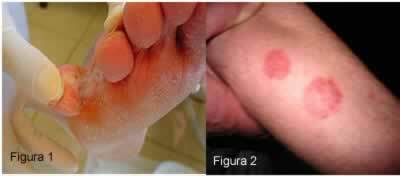You may have noticed that if you leave your milk warm on the table, after a while, it will be warm. On the other hand, if you leave a glass of cold soda to rest, it will be hot, right?! Why is this happening? Why do cold things get hot and hot things get cold?
Well, the temperature changes, the heat and the cold are phenomena of our day to day studied by a science known as Thermodynamics. This word comes from the Greek language and, if we divide it, we have the following:
Term means "heat"
dynamicsmeans "movement"
So, quite simply, Thermodynamics studies the “movement of heat”.
Milk and soda are made from molecules, which are small particles. As the figure below shows, these molecules are constantly moving around, going from one side to the other. The moving molecules shown below are those of water:

Molecules of water moving
If they are cold, it means they have little energy and therefore move very slowly.However, if these molecules gain energy, they will become hot, that is, with a higher temperature, and will start moving very fast.
The air around us is also made up of molecules, such as nitrogen gas molecules (N2) and oxygen gas (O2).

The air around the cup, the liquid vapor and the liquid inside the cup are all made up of molecules in constant motion.
So what happens is the molecules in the liquid come into contact with the molecules in the air. When these molecules collide (hit each other), the ones that are faster (hot liquid) lose energy and start moving slower, while molecules that were sluggish gain energy and become faster.
Energy is transferred from the hot liquid to air.If the liquid is cold, such as cold refrigerant, the opposite process will occur, energy will be transferred from the air to the cold liquid. These processes are known as heat exchanges.
Heat is a form of energy, called thermal energy, which is transferred from a higher temperature system to a lower temperature system.nor.
This heat exchange takes place first between the molecules on the surface of the liquid and then reaches those below them. This process occurs until the two (the liquid and the air) reach a state of the same energy, which is called thermal balance.
In other words, the result is that, over time, all the molecules will move at the same speed, that is, the liquid will have the same temperature as the surrounding air.
This also explains why hot milk cools faster when you blow it. By blowing the milk, we are increasing the amount of air molecules that will collide with the milk molecules. Thus, more heat exchanges occur than if the milk was standing still and only its surface molecules came into contact with the air molecules.

When we blow the milk, it cools faster because it comes in contact with more air molecules
By Jennifer Fogaça
Graduated in Chemistry


